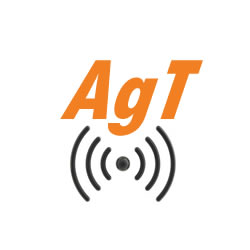There’s a paradox in fintech AI because the most effective systems are the ones customers don’t know exist.
Industry events are full of chatbots and virtual assistants, but the most valuable AI in finance works quietly in the background, preventing fraud, speeding approvals, and keeping transactions flowing. The best experience feels effortless precisely because
customers never realize AI was involved.
Visibility and Trust
Consumer sentiment reveals a contradiction. While over half of consumers regularly use generative AI tools, only
27% trust AI for financial advice or information. When AI is visible and experimental, it creates anxiety. When it’s invisible and reliable, it builds confidence.
Consider payment fraud detection. Networks like Visa and Mastercard process billions of transactions through AI-powered risk models, reducing both fraud losses and false declines. Customers experience this as “my card just works,” no declined purchases at checkout,
no fraudulent charges appearing later. The technology is sophisticated, but the experience is smooth..
Meanwhile, U.S. retail banking trust has declined significantly over the past two years, with 13% of customers likely to switch banks within 12 months.
The culprits? Fee surprises and service friction. These are exactly the kinds of problems that invisible AI can solve by proactively identifying and preventing issues before they surface.
Regulatory Backdrop
Regulators are somewhat cautious about front-end AI implementations. The
CFPB has flagged bank chatbots for creating ineffective and time-wasting experiences, signaling potential enforcement action. The message is that flashy interfaces that frustrate customers will draw scrutiny.
The EU AI Act, now in force with most obligations kicking in by August 2026, places credit scoring and fraud detection in high-risk categories that demand strict governance, explainability, and human oversight. The UK’s FCA ties AI deployment directly to Consumer
Duty obligations, emphasizing fair outcomes over technological novelty.
Where Invisible AI Works Best
Fintechs that lead on AI tend to focus on areas where it improves outcomes without drawing attention:
- Transaction monitoring: Machine learning filters suspicious activity with fewer false alarms, so legitimate transfers clear faster.
- Onboarding: Automated ID verification cuts account setup from days to minutes. Customers just see speed.
- Credit decisions: Models enable quicker approvals for thin-file applicants and earlier detection of risk.
- Operations: AI reconciles transactions, parses claims, and drafts compliant responses, reducing resolution times and errors.
From Tools to Platforms
The leaders are not patching in isolated AI tools. They are building unified platforms that run through fraud detection, customer service, onboarding, and marketing. Each interaction trains the system further, creating services that feel more personal
and frictionless , without customers ever seeing the machinery behind it.
Learning from Other Industries
Other industries already offer proven templates. Commercial aviation has relied on autopilot systems for decades, combining invisibility with strict oversight and human control. E-commerce platforms use recommendation engines and dynamic pricing seamlessly
in the background, making shopping feel natural and relevant without drawing attention to the algorithms.
Success Metrics
Instead of counting chatbot sessions, the meaningful measures of AI in finance are:
- Higher approval accuracy
- Fraud prevention with fewer false positives
- Faster dispute resolution
- Interventions that prevent fee surprises before they happen
These “silent save” metrics reflect AI’s true purpose: making financial services more reliable, faster, and less stressful.
The Invisible Advantage
The future of AI in financial services lies in systems that disappear into the background. Financial customers don’t want a relationship with AI. They want their financial lives to run smoothly. Give them invisible intelligence, and they’ll reward
you with their trust.












